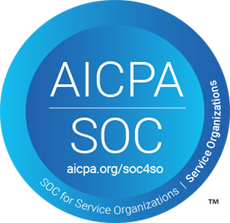The opportunities around Community Paramedicine – also known as Mobile Integrated Health Programs (or “MIH”) – have yet to be fully realized in care communities across the country. But the idea of leveraging emergency responders to extend the reach of Home Health services beyond just emergent, life-threatening calls is an intriguing one. MedStar, a Fort Worth-based EMS provider, has shared some promising statistics from its early adoption of the Community Paramedicine approach to address a disproportionate use of EMS as a “healthcare safety net.” With the desire of patients and caregivers to transfer as much care as possible to the home, coupled with the frank inability of health systems and hospitals to accommodate the sheer volume of aging and sick patients amid provider burnout and plummeting margins, exploring innovative ways to bolster the availability for Home Health services is a no-brainer. And yet, we’d be remiss as an industry to ignore the fact that EMS providers are notoriously less than first-class citizens when it comes to healthcare connectivity.
Meeting Patients Where They Are Will Be Key for Better Outcomes and Cost Containment
We shared before how connectivity for Home Health providers goes a long way for cultivating better patient outcomes. Extending the ability of EMS providers to jump in for preventative and non-emergent care would also contribute positively to patient outcomes, especially when you consider that it’s already in these providers’ nature to show up quickly, mitigate risk, and effectively evaluate the need for transfer. But the benefits become exponential in light of unaddressed populations that rely on the ED for even non-emergent care, the healthcare safety net referenced earlier in the Fort Worth case study. When it comes to addressing healthcare inequities, home and community-based care is where it’s at. (Literally.)
Consider, too, how beneficial it would be to insert an EMS provider in the process of deciding whether a trip to the Emergency Room is the right call. At times, it’s exactly what the doctor ordered. (Sorry, couldn’t resist a good pun.) But other times, simply having trained eyes on a patient could help triage a better path forward, such as a visit from Home Health or other providers who can meet needs without the extensive bill that comes with an emergent transport.
EMS Providers Must Be in The Loop for Community Paramedicine to Fly
It’s a beautiful thing when a unified care team can actually communicate effectively to make home-based care thrive. But taking into account the struggles already faced by many EMS providers to exchange and obtain clinical information to support their basic, existing duties, it’s going to take some work to equip these first responders to play a bigger role in population health. We heard loud and clear that healthcare connectivity is a boon to mental health and stress levels for EMS, so for the viability of this care model alone, we have to ensure that communication networks are as functional for large health systems as they are for Home Health providers working off a smartphone to paramedics documenting records in transit in an ambulance.
The opportunity we have to increase the quality and availability of services in communities by leveraging highly-skilled EMS providers as part of a community paramedicine strategy is one we cannot overlook. Our current models of care delivery are costly and unable to scale at the rate of need. But only when we ensure that first-responders have the tools they need to securely and efficiently exchange clinical information and collaborate with a care team does the potential come to fruition.







